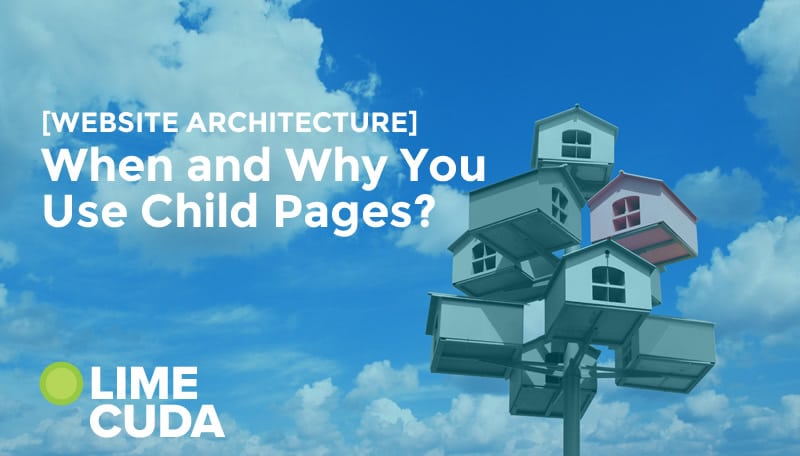When thinking about and assembling a Sitemap, one of the key considerations is that of hierarchy – which pages should be child pages, and why?

What is a Child Page?
A child page is a page that “lives” in hierarchy underneath another page (the parent). In the example below, both “Our Team” and “Company History” are child pages of “About”.
- Home
- About
- Our Team
- Company History
- Contact
A brief look at Sitemaps
A sitemap is a listing of public webpages or categories on your site.
When assembling a sitemap / site architecture, you want to keep it as flat as possible. Having parent/child relationships creates just that between the content on those pages – a relationship.
Once you add multiple layers, the relationship between the content becomes convoluted. This creates a hierarchy that is difficult for your users to navigate as well as increases the likelihood that pages will not be crawled and indexed by Google.
Should you find yourself in a situation with multiple levels of relationships (four or more) it may be a clear sign that you need to re-strategize the site’s architecture. Sites with thousands of pages of content present a challenge, but it is a challenge you can overcome.
Take a look at how massive sites are addressing the hurdle:
There are capabilities within the WordPress ecosystem to automatically generate both HTML sitemaps (what we are talking about here) and XML sitemaps (which get submitted to search engines).
Strive for a logical and sensible sitemap. Keep it simple.
What is the impact of making a page a “Child”?
There are three primary effects of making a page a child.
- It will affect the URL of the page. This is automatic in WordPress. The URL for the above example would be .com/about/our-team This is good and sensible. If you see this URL you know what the page is likely about.
- It may affect where the page visually “shows up” on your site. This is mostly of concern when thinking about, say, your top navigation. Most likely, it won’t make much sense to have a child page be one of your top-level nav items.
- It will affect your sitemap formatting. When viewing an automatically-generated sitemap, the child page should be neatly displayed under and indented to its parent page. This formatting helps someone at-a-glance understand your site.
If you are modifying existing pages, make sure that if the URL changes, you redirect the old URL to the new URL. We have written about why you should redirect your defunct pages.